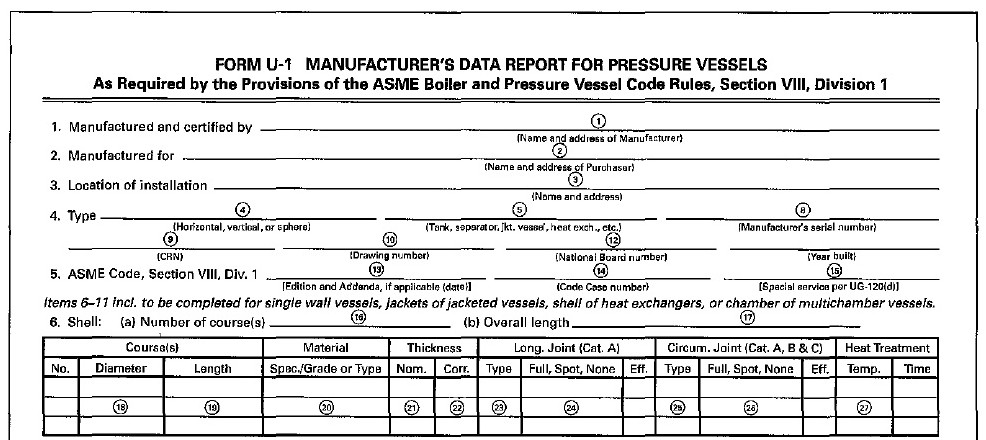PSI Explained: Materials of Construction
The owner of a PSM chemical process must gather information which describes the materials used in the construction of the process equipment. Typically, this will not be developed from scratch, but rather will be the compilation of equipment manuals, data reports, bulletins, catalogs, cut sheets, and drawings. For a process which utilizes ASME pressure vessels or heat exchangers, it is particularly important that manufacturer data reports be obtained. The data report is the “birth certificate” of the vessel / heat exchanger and, among other things, describes the specifications of steel used in construction. It is worth noting that the data reports also contain Maximum Allowable Working Pressure (MAWP) and Minimum Design Metal Temperature (MDMT) which are necessary for completion of Safe Upper and Lower Limits (technology of the process).

The internet is a very helpful resource when compiling Materials of Construction documentation since most manufacturers have literature available on their websites. The following list contains links to numerous ammonia refrigeration vendor websites which can be used to download Materials of Construction documentation:
- Evapco
- Baltimore Aircoil Company (BAC)
- Güntner
- Vilter
- GEA
- Mycom
- Refrigeration Valves and Systems
- Henry Technologies
- Hansen Technologies
- Danfoss
- Frick / Johnson Controls
- Parker Hannifin Refrigeration Specialties Division
- Cornell
- Teikoku USA Inc.
- Nikkiso Pumps America, Inc.

were do i find info on requirments for oil pot that are less than 6″ in diameter and do not have a U1A
“Vessels” that are less than 6″ in diameter represent an interesting class of equipment. Most codes / standards (RAGAGEPs) that govern pressure vessel rules only apply to vessels with diameter greater than 6″. For example:
ANSI/IIAR 2-2014 Section 12.2.2 Pressure vessels exceeding 6 in. (15.24 cm) inside diameter shall comply with ASME B&PVC, Section VIII, Division 1, covering the requirements for design, fabrication, inspection, and testing during construction of unfired pressured vessels
Similarly, 2015 ASME B&PVC Section VIII, Division 1 does not apply to “vessels having an inside diameter, width, height, or cross section diagonal not exceeding 6 in. (152 mm), with no limitation on length of vessel or pressure” (see U-1(c)(2)(i)).
With this in mind, there are no specific requirements for oil pots that are less than 6″. Rather, it may be that the oil pot isn’t a bona fide “vessel” at all.